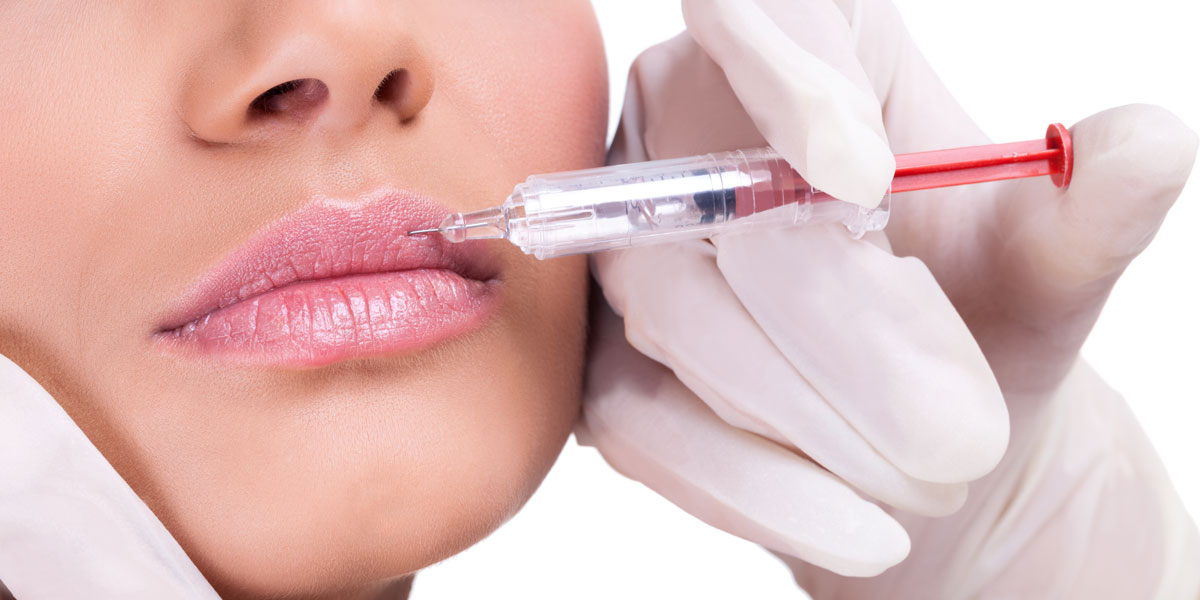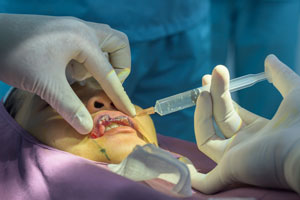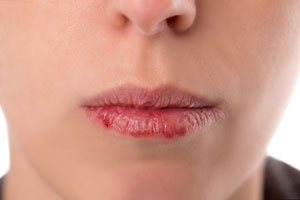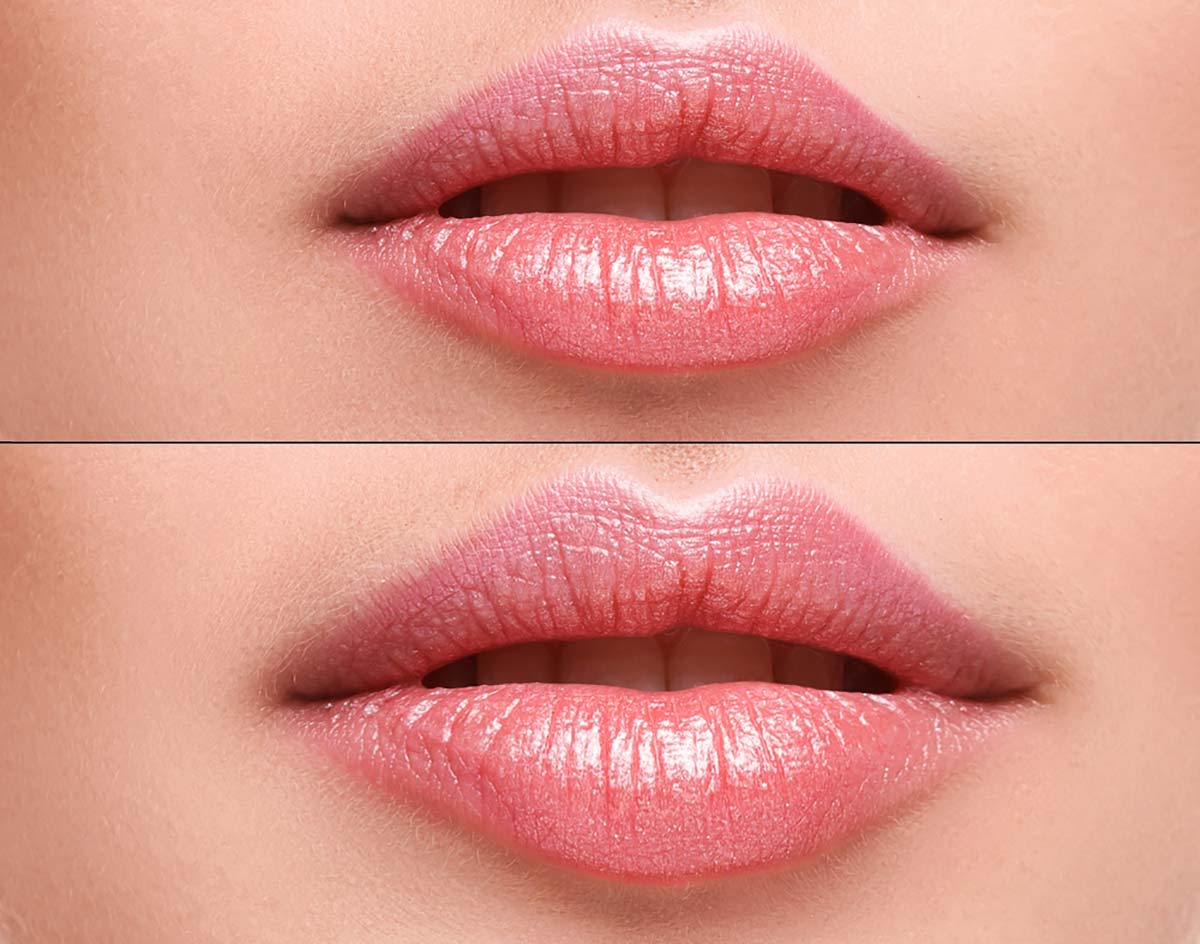What is Lip Augmentation?
Puckering up doesn’t come naturally or easily to all. You may feel that with a little more tissue, you could have what you would consider, fuller or more kissable lips. Whatever the reason, if you are interested in altering the shape of your lips, a lip augmentation might be the answer for you.
 Lip augmentation is a cosmetic procedure that can give you fuller, plumper lips. A common approach for the procedure is dermal injectable fillers. There are various types of dermal fillers used on patient’s lips and around their mouth. Most patients think of collagen when they think of lip augmentation, but collagen is used a lot less often today. So are fat injections. There are many newer options that last longer and are considered safer by some surgeons.
Lip augmentation is a cosmetic procedure that can give you fuller, plumper lips. A common approach for the procedure is dermal injectable fillers. There are various types of dermal fillers used on patient’s lips and around their mouth. Most patients think of collagen when they think of lip augmentation, but collagen is used a lot less often today. So are fat injections. There are many newer options that last longer and are considered safer by some surgeons.
Hyaluronic Acid Fillers – This improves the appearance of the patient’s lips by adding shape, structure, and volume. hyaluronic acid Fillers typically last six months, after which the patient will need more injections to keep the volume of their lips.
Hyaluronic Acid Benefits – Once the hyaluronic acid is injected, the gel inside the filler supports and shapes the tissue of the lips. The amount of this filler can be controlled so the doctor can decide how much lip volume is generated, depending on the patient’s needs and goals. This filler can also be injected gradually during various appointments until the patient is happy with the outcome. If bumps are created in the patient’s lips due to movement they are easily dissolved due to this filler choice. Compared to other fillers, hyaluronic acid may cause less bruising and swelling, and have long lasting results. This filler is made from elements similar to ones found in the body, which makes it more unlikely for patients to have an allergic reaction.

Examples of hyaluronic acid fillers on the market include:
- Juvederm Ultra, Juvederm Volumna XC, Juvederm Ultra Plus, Juvederm 30, Juvederm 30HV
- Restylane, Restylane-L, Restylane Silk
- Perlane, Perlane-L
- Belotero Balance
- HylaForm
- Elevess
- Captique
- Prevelle Silk
The products listed above are all injected the same way and give patients comparable results.
Lip Implants
If a patient has very thin lips they may decide to have a permanent lip augmentation with more distinguished results than the lip fillers. The most popular types of lip implants include GORE-TEX, SoftForm, and AlloDerm.
During a lip implant surgery the doctor will typically make incisions at the corners of the patients mouth, creating a tunnel for the implant to be placed. Once the tunnel is created the implant will be threaded through the lip and trimmed to the proper length of the patients mouth.
Gore-Tex Lip Implant
This lip implant is made from the same material that is used in raincoats and in tents. It’s a non-reactive polymer. Some patients feel this implant is stiff, but it has micropores allowing natural lip tissue to grow making the implant part of the lip structure.
Softform Lip Impant
This implant is made from the same material as the Gore-Tex but has a tubular shape. This shape is said to lessen the chance of implant migration.
AlloDerm Lip Implant
This implant is made from real human-tissue that has been donated. A bonus to this implant is that it will not cause an allergic response due to being real human tissue.
Lip Augmentation – the ideal candidate
 When undergoing any cosmetic surgery patients should ask themselves why they want to change their current appearance and make sure it is for the right reasons. A patient should not change their appearance to satisfy somebody else, or to conform to an ideal that is unattainable. Patients should go over their expectations with their doctor to ensure they are realistic. Before going through with lip augmentation surgery patients should be in good health and be nonsmokers. If a patient has an infection such as oral herpes, diabetes, lupus, or blood-clotting, lip augmentation may not be a good cosmetic surgery option for them.
When undergoing any cosmetic surgery patients should ask themselves why they want to change their current appearance and make sure it is for the right reasons. A patient should not change their appearance to satisfy somebody else, or to conform to an ideal that is unattainable. Patients should go over their expectations with their doctor to ensure they are realistic. Before going through with lip augmentation surgery patients should be in good health and be nonsmokers. If a patient has an infection such as oral herpes, diabetes, lupus, or blood-clotting, lip augmentation may not be a good cosmetic surgery option for them.
Patients should always tell their doctor what medications they are currently on, as well as any known allergies they have. This will allow the doctors to determine whether or not it is safe for the patient to go through with the lip augmentation surgery.
What should be expected during surgery?
If a patient is receiving injectable lip augmentation they can expect little to no downtime, as well as a quick procedure. If a patient is receiving fat injections into their lips they will need to have a small area of liposuction in order to remove fat from a part of their body and then inject it into their lips.
Patients can receive a numbing application to lessen the discomfort of the injection. The numbing application can be given to the patient before their augmentation so that their lips are completely numb.
 The doctor will mark the areas that need to be injected on the lips and then use very small needles to inject the filler substance into the lips. Afterwards, the patient may apply ice on their lips to control swelling and lessen the pain.
The doctor will mark the areas that need to be injected on the lips and then use very small needles to inject the filler substance into the lips. Afterwards, the patient may apply ice on their lips to control swelling and lessen the pain.
Lipstick or other lip products should be avoided immediately after the procedure.
The patient should be able to notice a difference immediately in their lips, and after the patient has healed, their lips should feel natural.
Lip augmentation through lip fillers requires very little recovery time, most patients can return to their normal routine within a day. If the patient receives a lip implant procedure they will need around a week to recover.
Lip Augmentation Risks
 Side effects of hyaluronic acid fillers are temporary and should only last a few days, the side effects may include:
Side effects of hyaluronic acid fillers are temporary and should only last a few days, the side effects may include:
- Bleeding from injection sites
- Swelling and/or bruising
- Redness and sensitivity
Sever Risks Include:
- Prolonged swelling and/or bruising lasting up to ten days
- Allergic reaction causing redness, swelling, or itching around the lips
- Lumps and abnormalities in the lips
- Infection
- Lip asymmetry (lips are different sizes)
- Injection into a blood vessel causing tissue loss
- Scarring, or stiffening of the lip
- Rejection
- Implant migration





